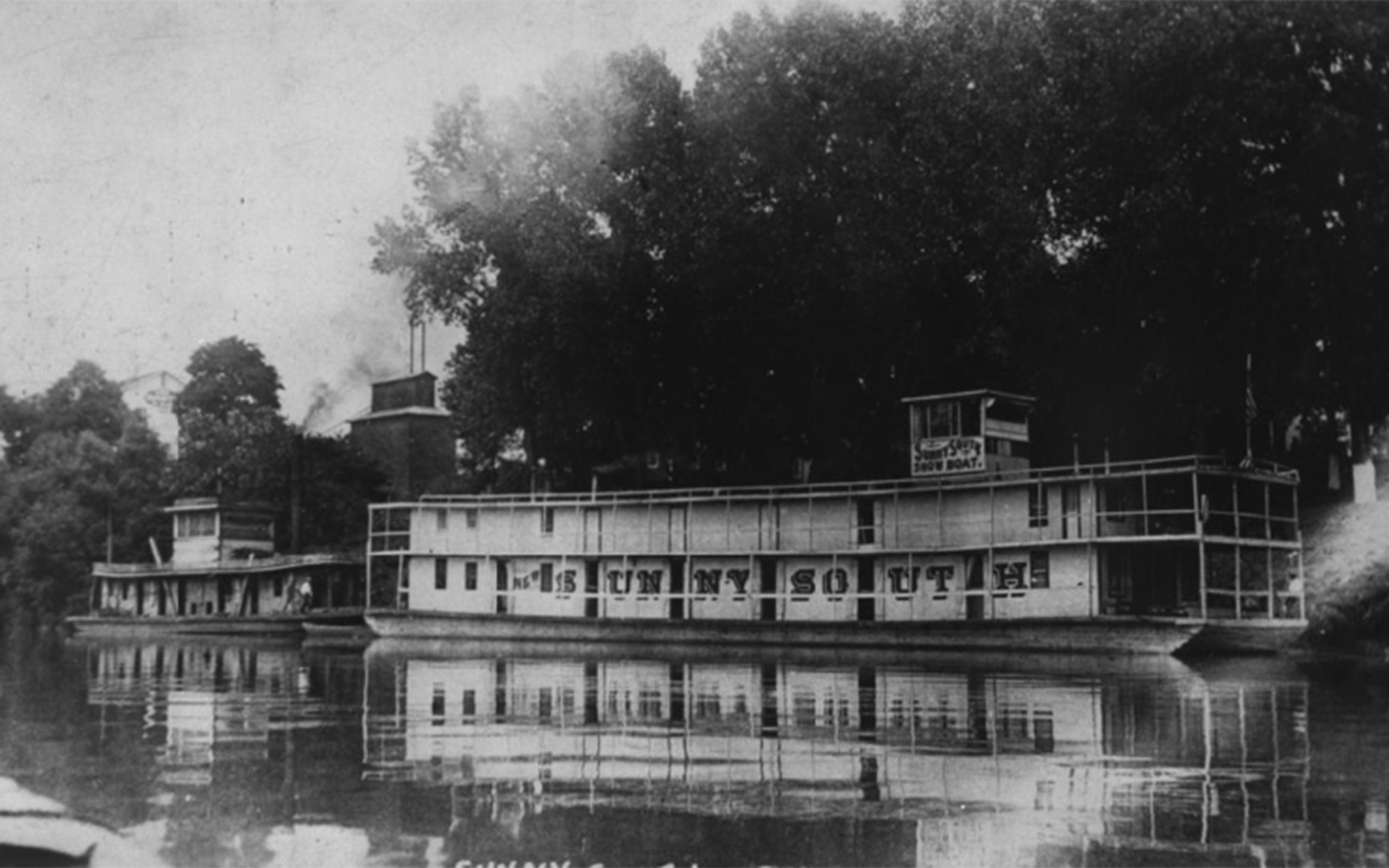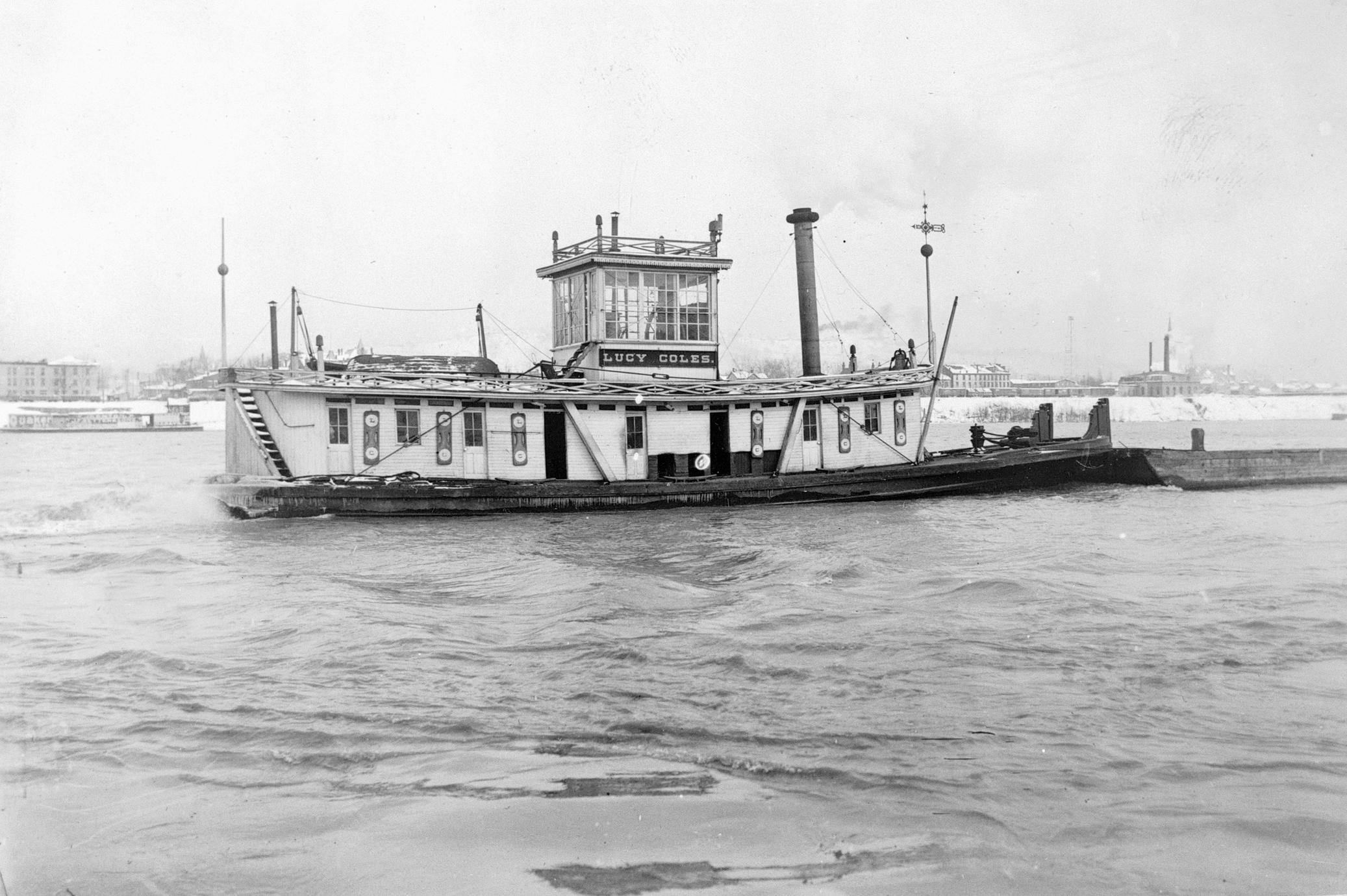In the last Old Boat Column, we looked at two towing vessels that were “odd” for the Western Rivers. This week we will look at another “odd duck,” and this one dates to the late 19th century. It was a hard-working little vessel for most of its near 50-year existence, which was a long life for a wooden-hulled craft.
The Ashland Coal & Mining Co. (AC&M), Ashland, Ky., dated to the mid-1860s and was involved in the mining of coal in eastern Kentucky. AC&M also owned the Ashland Coal & Iron Railway, previously the Lexington and Big Sandy Railroad. The railroad, acquired by AC&M in 1866, covered about 25 miles between Ashland and Seaton, Ky. AC&M company also owned iron furnaces, including the Ashland Furnace, built on the banks of the Ohio River in 1869 and purported to be the world’s largest furnace at the time, with a daily capacity of some 45 tons.
With several facilities on the river in areas like Ashland and Ironton, Ohio, AC&M utilized small wooden barges to deliver coal to various sites. Packets and towboats would often take on coal at the main landing at Ashland. In 1881, AC&M built a small towboat to utilize in the company’s local deliveries. Way’s Steam Towboat Directory states the towboat was built at Ashland but gives no indication of the builder.
The boat had a wooden hull that measured 78 by 14 by 4 feet. The vessel likely had a single prop, but no information is supplied on machinery. The name given to the new boat was Lucy Coles. While there had been many contemporary small prop boats built on the river system for similar purposes, most were “plain Jane” work boats. That was not the case with the Lucy Coles, which was adorned with many frills not seen on simple work boats.
The pilothouse atop the main cabin was abnormally large, and it was crowned with fancy railings with large wooden turned acorns on the posts at the four corners. The single smokestack forward of the pilothouse had a decorative “puddin” at the top like those found on the packets of Greene Line Steamers. The forward mast had a “nighthawk” ball and was topped by a very fancy weathervane. The stern mast also had a nighthawk, and the railing around the second deck matched the one on top of the pilothouse. A large bell was mounted forward, and a single barrel whistle was mounted on the large pilothouse.
There was a long work deck ahead of the main cabin, and at intervals along the cabin bulkhead on each side were hanging six life boards or floats (a forerunner of life rings). Even these were elaborate, with an ornate “L” at the top and a “C” at the bottom. Regardless of the fanciful frills on the Lucy Coles, those involved in safety issues today would be shocked to take a close look at the lack of guard chains and stairway handrails and to see how low the railings were.
After working many years in the Ashland area, the Lucy Coles was sold to Capt. E.P. Matthews of Point Pleasant, W.Va. The exact date for this sale is not listed in any reference material but must have taken place in the early- to mid-1920s. Under Capt. Matthews’ ownership, the vessel was engaged in towing the showboat Sunny South. Photos taken at the Marietta Manufacturing Company, Point Pleasant, W.Va., in 1927 show it moored below the sunken towboat W.K. Field (see The Waterways Journal, January 23, 2023). According to Way’s, the Lucy Coles “settled to her watery grave” there in November 1928. Later photos show the boat virtually disintegrating where it sank.
As with researching most of these old boats, there are some mysteries and inconsistencies with the story of the Lucy Coles. Beginning in 1903, the annual List of Merchant Vessels shows the boat with dimensions of 81 feet by 17 feet and having been built at Point Pleasant, W.Va., in 1902. There is also a different official number beginning in 1903. Photos of the Lucy Coles towing the Sunny South in the 1920s and at Marietta Manufacturing Company before and after the 1928 sinking show what appears to be the original vessel. Very likely it received a new hull at Point Pleasant in 1902 and was then registered as a new boat while retaining the original superstructure.

The Lucy Coles long has been one of this writer’s favorite boats that he never laid eyes on. Brothers Charles and Roland Montague, both now deceased, must have felt the same way since in 1959 they built a small sternwheel pleasure boat at Ashland that they named Lucy Coles. That boat measured 47 feet by 14 feet and was originally powered by steam. After that didn’t work well, it was repowered with a gasoline engine in 1963. Today, it is powered by an Oldsmobile diesel engine, is named Henny Cook and is owned by Duke and Christy Grant of Nitro, W.Va.
————
Featured photo caption: The steamer Lucy Coles at Ashland, Ky. on February 17, 1900. (Thornton Barrette photo from the author’s collection)




